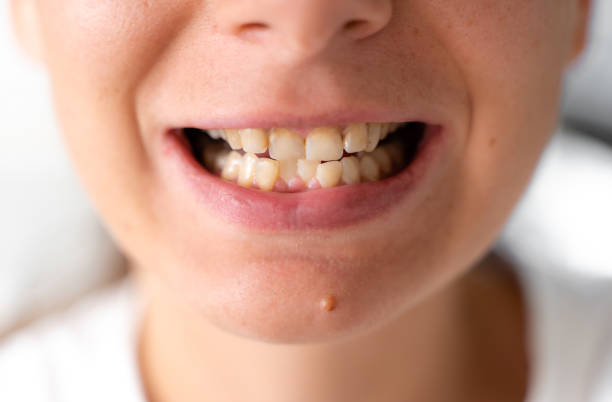Malocclusion: A Commonly Overlooked Dental Issue
Malocclusion, or misalignment of the teeth and jaw, is often considered a problem that needs to be addressed only during childhood or adolescence. However, this condition is also prevalent among adults and has significant impacts, both aesthetically and health-wise. If left untreated, malocclusion can affect chewing function, cause jaw pain, and even increase the risk of temporomandibular joint (TMJ) disorders. Research by drg. Josephine C Paula Heryumani Sulandjari, MS, Sp.Ort(K), and Dr. drg. Dyah Karunia, Sp.Ort.(K)has shown that the severity of malocclusion is correlated with the psychosocial status of teenagers in urban and rural areas, highlighting psychological effects that may persist into adulthood.
Treatment Options for Adults
While many believe that orthodontic treatment is only for children, modern technology now allows adults to receive effective solutions for malocclusion. Clear aligners have become a popular choice due to their nearly invisible design, while traditional braces remain a reliable option for more complex cases. Consulting an orthodontist is crucial to determine the appropriate treatment based on the severity of malocclusion and the patient's needs. This is supported by research from Dr. drg. Cendrawasih Andusyana Farmasyanti, M.Kes., Sp.Ort.(K), and drg. Wayan Ardhana, MS, Sp.Ort(K) , which explores the factors influencing teenagers’ decisions to undergo or forego orthodontic treatment for malocclusion, with findings linked to accessibility to dental healthcare services, awareness of treatment, and knowledge about orthodontic care.
The Role of Comprehensive Treatment
Addressing malocclusion is not limited to orthodontic treatment alone. In some cases, a combination of procedures such as jaw surgery or dental restorations may be required to achieve optimal results. This holistic approach ensures that patients achieve good oral function, comfort in speaking and eating, and increased self-confidence.
Why is it Important to Address Malocclusion in Adulthood?
Untreated malocclusion not only affects oral health but can also impact posture, digestion, and even sleep quality. Delaying treatment may worsen the condition, making the correction process more complicated in the future. Therefore, it is essential for adults to recognize the signs of malocclusion and seek professional care as soon as possible.
First Steps to Take
For those who suspect they have malocclusion, the first step is to consult a dentist or orthodontist. An initial examination will help identify the causes and effects of malocclusion and provide an overview of the available treatment plans. With the latest technology and various treatment methods available, correcting malocclusion in adulthood is no longer an impossible task.
***
Facing malocclusion may seem challenging, but the long-term benefits—both for health and self-confidence—are invaluable. Proper orthodontic treatment aligns with the Sustainable Development Goals (SDGs), particularly: SDG 3: Good Health and Well-being, by enhancing oral health and overall quality of life; SDG 4: Quality Education, through increased awareness of the importance of early dental care, preventing more complex problems in the future; and SDG 8: Decent Work and Economic Growth, by boosting confidence and comfort in professional environments, leading to improved productivity. Do not hesitate to take the first step towards a healthy and harmonious smile!
References
drg. Josephine C Paula Heryumani Sulandjari, MS, Sp.Ort(K), Dr. drg. Dyah Karunia, Sp.Ort.(K), The Relationship Between Malocclusion Severity and the Psychosocial Status of Adolescents in Urban and Rural Areas (A Study on High School Students in Sleman, Yogyakarta), https://etd.repository.ugm.ac.id/penelitian/detail/82425
Dr. drg. Cendrawasih Andusyana Farmasyanti., M.Kes., Sp.Ort.(K), drg. Wayan Ardhana, MS, Sp.Ort(K), Factors Influencing the Decision to Undergo or Forego Orthodontic Treatment in Adolescents Aged 15-18 Years with Moderate to Severe Malocclusion (A Study in SMA 1 Mlati, SMA 1 Sayegan, and SMA 1 Ngaglik), https://etd.repository.ugm.ac.id/penelitian/detail/111651
Author: Rizky B. Hendrawan | Photo: Freepik



